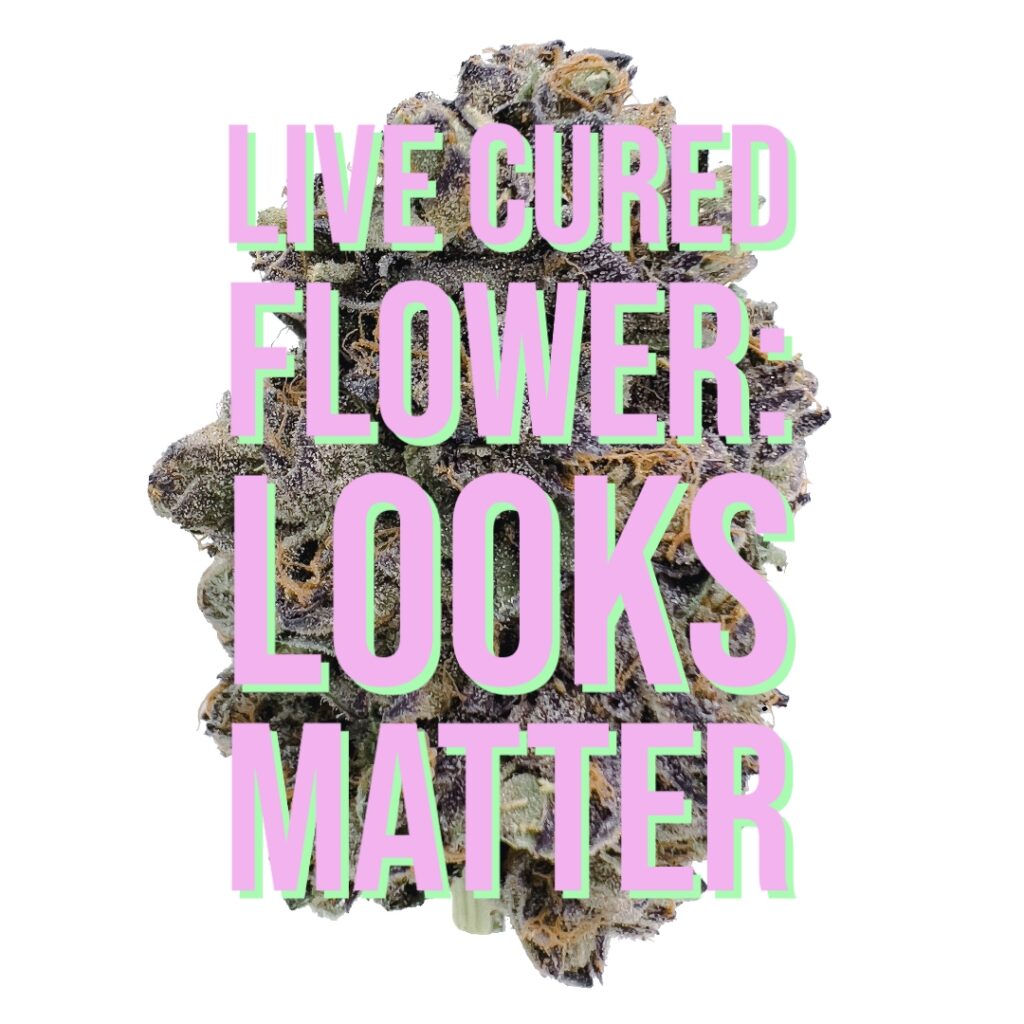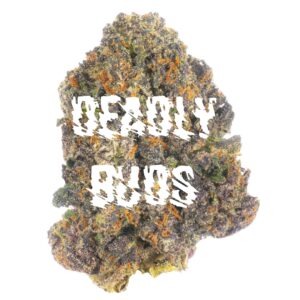Since we’re in the business of selling flower, looks matter. Our Live Cured Flower is the embodiment of perfection. We take cannabis at it’s peak and freeze it in time for you to experience. There are many signs that lead us to select the flower that goes into our jars. Most of them are surrounding the overall health and care the plant has received. Not every cultivar makes it to market and certainly not every bud. We are extremely selective when choosing the “On-Form” flower that we’re ultimately going to share with you. Let me guide you through some of what defines on-form flower for us.
Normal 0 false false false EN-US X-NONE X-NONE /* Style Definitions */ table.MsoNormalTable {mso-style-name:"Table Normal"; mso-tstyle-rowband-size:0; mso-tstyle-colband-size:0; mso-style-noshow:yes; mso-style-priority:99; mso-style-parent:""; mso-padding-alt:0in 5.4pt 0in 5.4pt; mso-para-margin-top:0in; mso-para-margin-right:0in; mso-para-margin-bottom:8.0pt; mso-para-margin-left:0in; line-height:107%; mso-pagination:widow-orphan; font-size:11.0pt; font-family:"Calibri",sans-serif; mso-ascii-font-family:Calibri; mso-ascii-theme-font:minor-latin; mso-hansi-font-family:Calibri; mso-hansi-theme-font:minor-latin; mso-bidi-font-family:"Times New Roman"; mso-bidi-theme-font:minor-bidi; mso-font-kerning:1.0pt; mso-ligatures:standardcontextual;} Calyces

A calyx refers to a part of a flower’s structure found on the outermost whorl of a flower bud in an alternating pattern with the sugar leaves. It is composed of sepals, which are typically green or purple, leaf-like structures that form its bulbous shape. The main function of the calyx is to protect the developing cannabis flowers pistils and if pollenated, the seed. The pistils refer to the “hairs” on the bud which give it the distinct look people are familiar with. The pistils and calyces are there to attract pollen and if they’re not mature or heathy looking then they would never serve that function. Flower needs to be attractive enough for a pollinator to want to pollinate it.
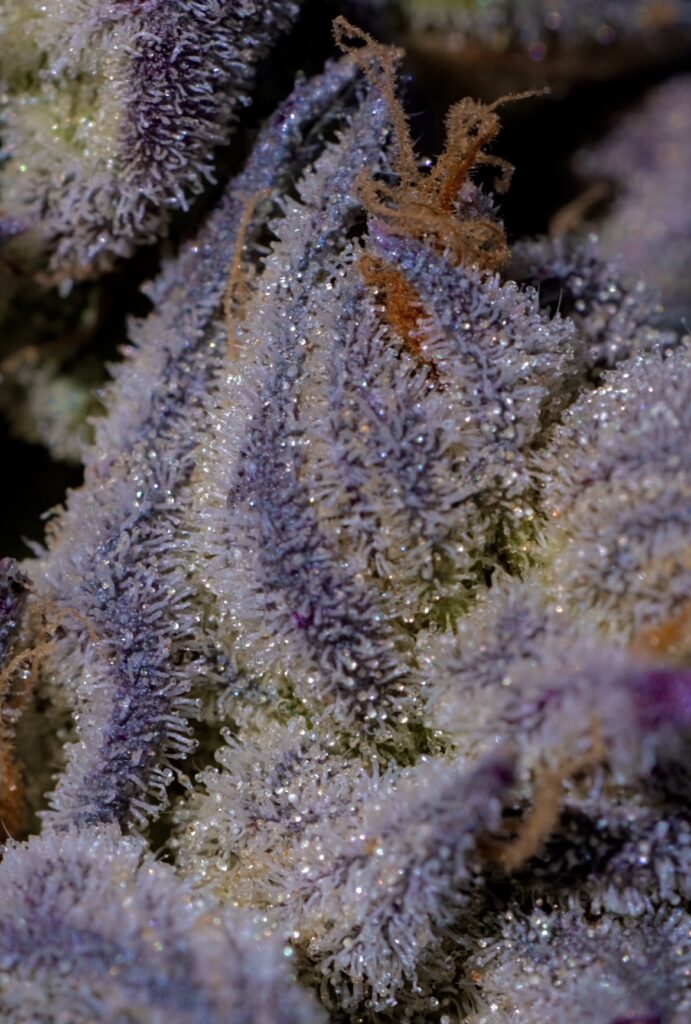
When cannabis is in the vegetative stage, the calyx encloses and protects the inner parts of the flower such as the pistils and other reproductive components. As the flower matures, the calyx may swell and appear as though it’s going to burst. The pistils protrude from the calyx and turn from translucent white to a darker rust orange. Visually inspecting these pistils is a way we check to see if the flower is ready for harvest. We don’t want to harvest anything with white pistils because it’s not mature enough for our process. We preserve everything the way it was at harvest so there’s no hiding those flaws.

The number, shape, and arrangement of calyx lobes (individual sepals) on each calyx can vary among different types of cannabis cultivars. Some flower buds have calyces with sepals that are separate and distinct, while others have a fused calyx appearance with sepals that are united into a single structure. It’s truly fascinating to see how cannabis can appear so similar yet so different between cultivars and phenotypes.
The calyx is an essential part of a flower buds’ structure, serving a protective and supporting role during its development and maturation. It’s worth noting that the calyx to leaf ratio can vary dramatically based on cultivar and environmental factors. So not every flower bud meets spec regardless of calyx maturity.
Normal 0 false false false EN-US X-NONE X-NONE /* Style Definitions */ table.MsoNormalTable {mso-style-name:"Table Normal"; mso-tstyle-rowband-size:0; mso-tstyle-colband-size:0; mso-style-noshow:yes; mso-style-priority:99; mso-style-parent:""; mso-padding-alt:0in 5.4pt 0in 5.4pt; mso-para-margin-top:0in; mso-para-margin-right:0in; mso-para-margin-bottom:8.0pt; mso-para-margin-left:0in; line-height:107%; mso-pagination:widow-orphan; font-size:11.0pt; font-family:"Calibri",sans-serif; mso-ascii-font-family:Calibri; mso-ascii-theme-font:minor-latin; mso-hansi-font-family:Calibri; mso-hansi-theme-font:minor-latin; mso-bidi-font-family:"Times New Roman"; mso-bidi-theme-font:minor-bidi; mso-font-kerning:1.0pt; mso-ligatures:standardcontextual;} Trichomes
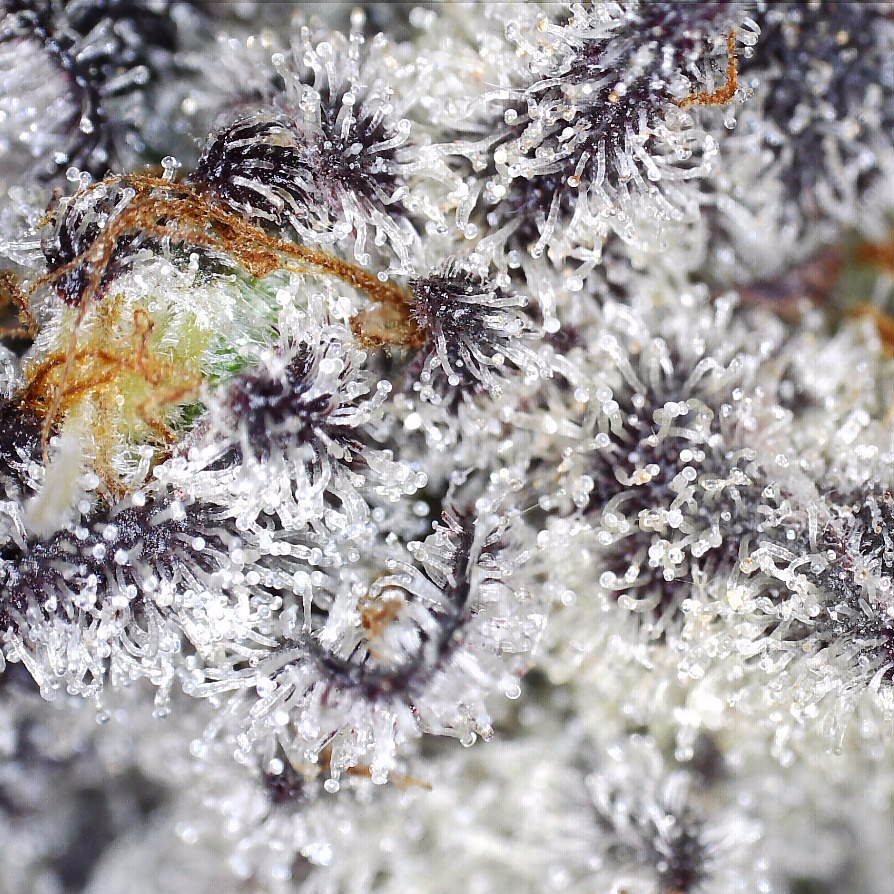
Trichomes are tiny, stalk-like structures that appear on the surface of leaves, stems, and flower buds. People often call them “crystals” when not familiar with the term trichome. They can vary in size, shape, and density depending on the cultivar’s genetic expression and environment.
Trichomes play a crucial role in producing and storing various compounds, particularly cannabinoids and terpenes. Cannabinoids are responsible for some of the plant’s psychoactive and therapeutic properties. Terpenes are aromatic compounds that contribute to the unique scent and flavor profiles of different cannabis cultivars. Terpenes also play a role in the overall effects of the flower when consumed (see Terpenes in Cannabis and The Entourage Effect).
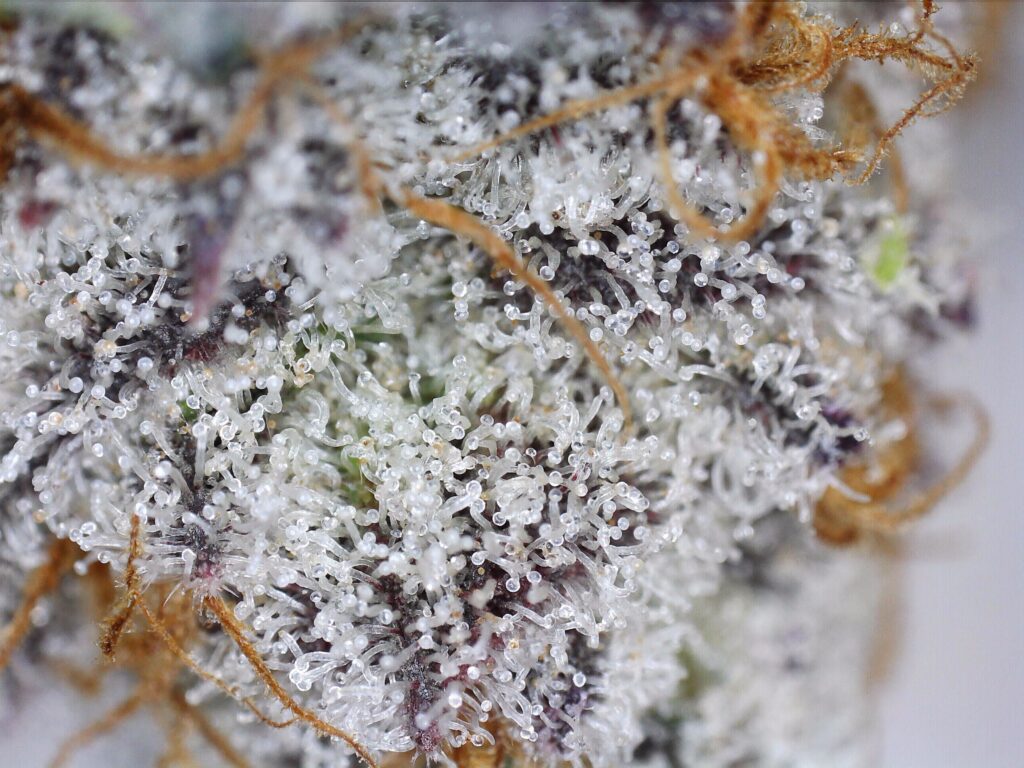
We typically characterize a mature trichome by its appearance under magnification, specifically using a microscope. At this stage, trichomes have reached their full development and are often visible as tiny mushroom-like structures or bulbous glands on the surface of the plant. Trichomes change in color, from clear to cloudy or amber, as they reach maturity.
The stage of trichome maturity is an essential factor in us determining the optimal time for harvest. The ratio of clear to cloudy or amber trichomes can indicate the plant’s level of cannabinoid and terpene production, as well as its potential psychoactive and therapeutic effects. We prefer harvesting the plants when the trichomes are mostly cloudy, with a peppering of some amber ones. To us this indicates that the plant has hit its peak and is ready to be skillfully trimmed.
Mature trichomes are a critical aspect of Live Cured Flower because it influences the chemical composition and effects of the final product. We preserve them by carefully hand-trimming the plants immediately after harvest instead of machine trimming them. Machine trimming destroys the beautiful trichomes that nature intended us to consume (see Hand-Trimming vs Machine-Trimming). The destruction of these trichome structures not only affects the cannabinoid content of the flower but also deeply affects the overall smell and taste of the flower due to the terpenes being lost. Even if there’s machine trimmed flower that smells good… they’re pulling one over on you.
Normal 0 false false false EN-US X-NONE X-NONE /* Style Definitions */ table.MsoNormalTable {mso-style-name:"Table Normal"; mso-tstyle-rowband-size:0; mso-tstyle-colband-size:0; mso-style-noshow:yes; mso-style-priority:99; mso-style-parent:""; mso-padding-alt:0in 5.4pt 0in 5.4pt; mso-para-margin-top:0in; mso-para-margin-right:0in; mso-para-margin-bottom:8.0pt; mso-para-margin-left:0in; line-height:107%; mso-pagination:widow-orphan; font-size:11.0pt; font-family:"Calibri",sans-serif; mso-ascii-font-family:Calibri; mso-ascii-theme-font:minor-latin; mso-hansi-font-family:Calibri; mso-hansi-theme-font:minor-latin; mso-bidi-font-family:"Times New Roman"; mso-bidi-theme-font:minor-bidi; mso-font-kerning:1.0pt; mso-ligatures:standardcontextual;}
Coloration
Zooming out from trichomes, we study some of the distinct colors of the plant. Leaf coloration can be an essential indicator of overall plant health and can provide valuable insights into a plant’s well-being. The color of leaves can change due to various factors, and we can often use these changes to diagnose potential issues with the plant. Here are some common leaf colorations and what they might signify:
- Green leaves: In some cases, healthy plant leaves should be predominantly green if not purple. The green color comes from chlorophyll, the pigment responsible for photosynthesis, which is crucial for the plant’s growth and energy production.
- Yellowing leaves: Yellowing leaves, known as chlorosis, can indicate various problems. It may be a sign of nutrient deficiencies, such as a lack of nitrogen, iron, magnesium, or other essential minerals. Overwatering or poorly drained soil can also lead to yellowing leaves due to root stress. Additionally, pests, diseases, or environmental stressors may cause yellowing.
- Red or purple leaves: Healthy plants naturally have red or purple leaves sometimes, but in other cases, these colors can be an indication of stress. We look carefully at the coloration in each plant and make sure that this is the correct genetic expression of the cultivar (see Why is Cannabis Purple). There are other tell-tale signs that would point to stress over the natural colorations of the plant, and we take all of that into account.
- Brown or scorched leaves: Brown, dry, or scorched leaf edges can be a sign of water stress, such as underwatering or exposure to extreme heat or intense lighting.
- Wilting leaves: Wilting leaves can indicate both underwatering and overwatering, as well as root damage, diseases, or pests.
- Spotted leaves: Spots on leaves can be caused by various fungal, bacterial, or viral infections. These can affect the plant’s ability to photosynthesize and can lead to an overall decline in health.
Take a look at this photo from our What is Top Shelf Flower post to get a visual of some leaf coloration.
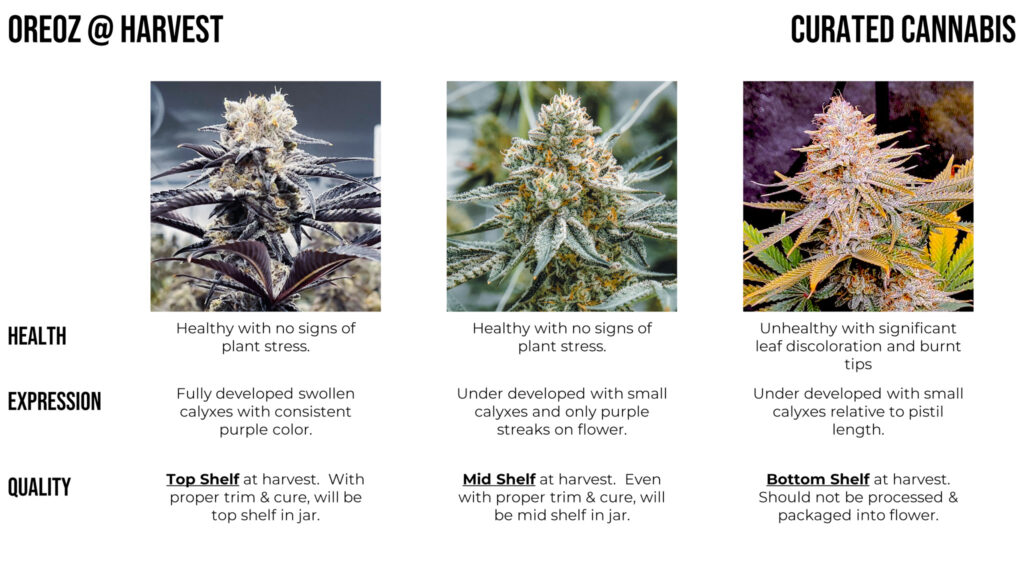
Leaf coloration can be influenced by many factors, including cultivar, maturity, and environmental conditions. Therefore, we consider the overall context and obviously don’t rely solely on leaf coloration for the plant’s overall health assessment. We often observe other symptoms, such as wilting, irregular growth patterns, pest presence, and variations in bud development throughout the plant, to get a comprehensive understanding of its health. We’re able to assess if the plant was taken care of or if it was neglected. Care throughout the plants’ entire life cycle is what we bring to you.
Luckily these issues contributing to “off-form” flower aren’t something we have to worry about with our trusted cultivators. They know our spec and work hard to meet those expectations. We prominently feature the cultivator that we harvested the flower from because we think they deserve recognition for the hard work it took to help the cultivar reach its genetic potential.
We demand excellence when it comes to what we ultimately share with each of you. You smoke with your eyes first, so why not enjoy the beauty of what you’re consuming.
Stay safe and stay stoned!
